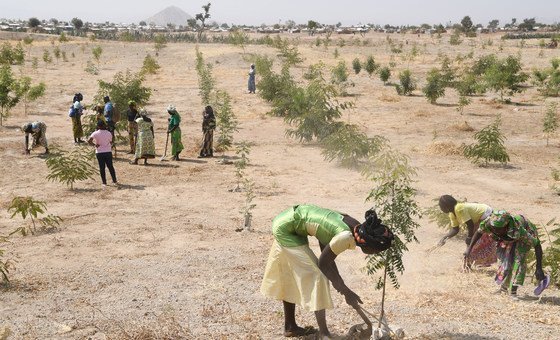Weather-related crises have triggered more than twice as much displacement as conflict and violence in the last decade, the UN refugee agency (UNHCR) said on Thursday.
Coinciding with Earth Day on Thursday 22 April, the UN High Commissioner for Refugees, UNHCR, published data showing how disasters linked to climate change likely worsen poverty, hunger and access to natural resources, stoking instability and violence.

“From Afghanistan to Central America, droughts, flooding, and other extreme weather events are hitting those least equipped to recover and adapt”, said the UN agency, which is calling for countries to work together to combat climate change and mitigate its impact on hundreds of millions of people.
Since 2010, weather emergencies have forced around 21.5 million people a year to move, on average.
Home countries worst hit
UNHCR said that roughly 90 per cent of refugees come from countries that are the most vulnerable and least ready to adapt to the impacts of climate change.
These countries also host around 70 per cent of people internally displaced by conflict or violence.
Citing the case of Afghanistan, UNHCR noted that it is one of the most disaster-prone countries in the world, as nearly all of its 34 provinces have been hit by at least one disaster in the past 30 years.
The country is also ranked the least peaceful globally, owing to longstanding conflict that has killed and injured thousands of people and displaced millions.
Chronic floods, droughts
Recurring floods and droughts – along with population growth – have compounded food insecurity and water scarcity and reduced the prospects of refugees and IDPs being able to return to their home areas, UNHCR said.
It pointed to indications that 16.9 million Afghans – nearly half of the country’s population – lacked enough food in the first quarter of 2021, including at least 5.5 million facing emergency levels of food deprivation.
As of mid-2020, more than 2.6 million Afghans were internally displaced and another 2.7 million were living as registered refugees in other countries, mainly Pakistan and Iran, according to UNHCR.
Mozambique is experiencing a similar confluence of conflict and multiple disasters, says the agency, with one cyclone after another battering the country’s central region while increasing violence and turmoil to the north displaces hundreds of thousands of people.
Hosts hit too
Many of the countries most exposed to the impacts of climate change are already host to large numbers of refugees and internally displaced.
In Bangladesh, more than 870,000 Rohingya refugees who fled violence in Myanmar are now exposed to increasingly frequent and intense cyclones and flooding.
“We need to invest now in preparedness to mitigate future protection needs and prevent further climate caused displacement,” said UN High Commissioner for Refugees Filippo Grandi, earlier this year.

